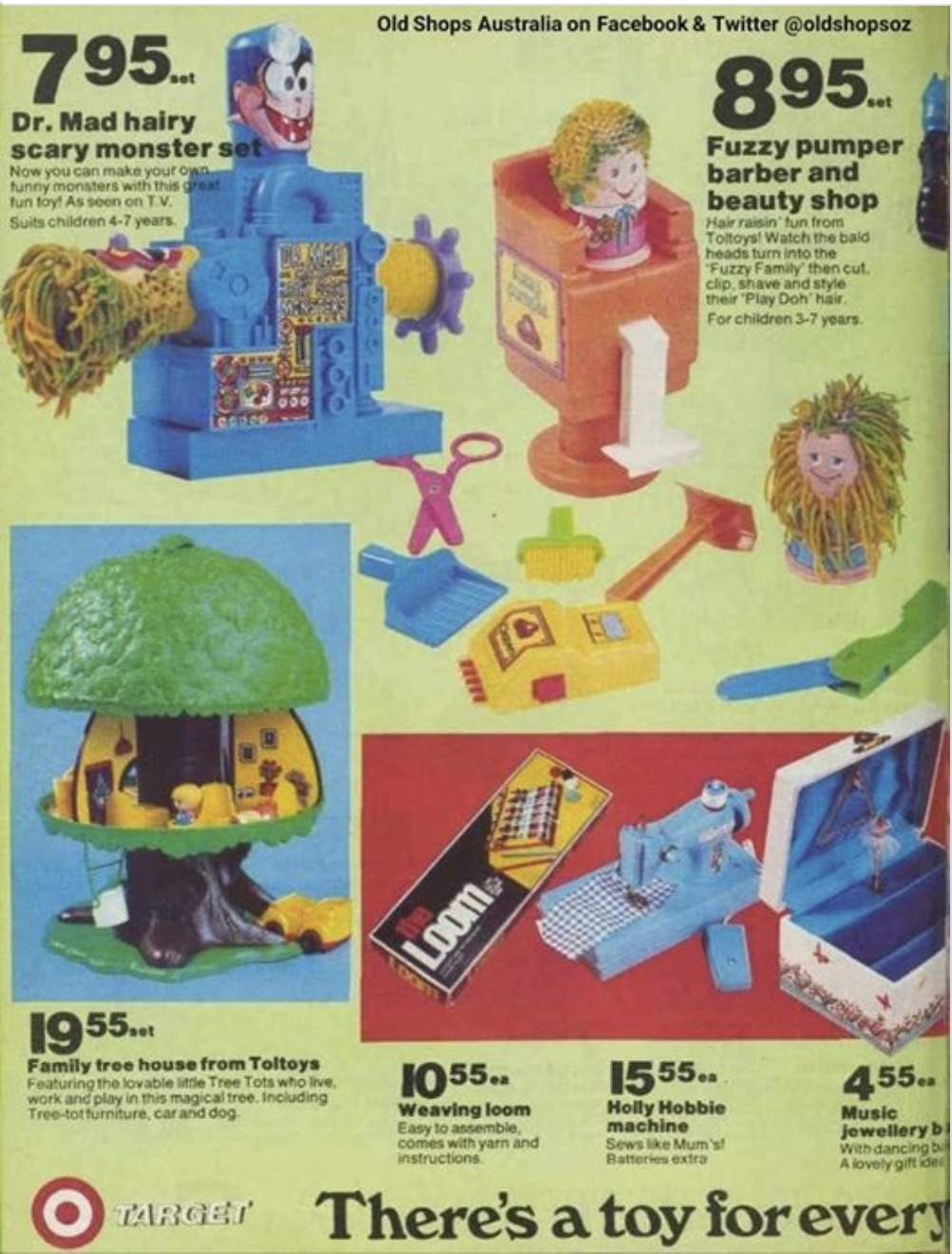
When you look at the array of presents piled up under the tree at your kids’ homes this Christmas, waiting for your grandchildren to rip into, you’re probably amazed by the sheer volume of gifts. You might even be thinking that children today are far more spoiled than your own kids were.
And you’d be right, but it’s not necessarily their fault. The figures show that it really was much more expensive for you to buy toys for your own children than it is for parents today, so your kids can probably be excused for over-indulging their little ones a bit – just because it’s easier for them to do so than it was for you.
The Old Shops Australia Facebook group – which calls itself Australia’s largest Facebook group dedicated to retro retail memories – posted a page from a Target toy catalogue from Christmas 1978, featuring some favourites from the time, including the much-desired Family Treehouse from Toltoys.
Group administrator Chris Ho jokes in his post that there’s “no need for Afterpay” because the treehouse is less than $20. But in fact, that treehouse was, in relative terms, a much bigger pinch in the pocketbook for parents of 1978 than its equivalent would be today. Lay-by would’ve almost certainly been required!

Here’s how the rough stats stack up (we’ve got as close as we can with the data available from the Australian Bureau of Statistics (ABS) and the Reserve Bank 0f Australia (RBA)) – feel free to pull the numbers out on Christmas Day if your adult children feel inclined to comment on the paucity of their childhood Christmases!
The average male earned a seasonally adjusted wage of $220.40 a week in September 1978, compared to a seasonally adjusted average of $1,871.40 earned by men in May 2019, according to the ABS.
Using the RBA’s inflation calculator, which only goes up to 2018 at present, that yellow-and-green treehouse, which retailed for $19.55 at Christmas 1978, would cost about $101 in today’s money. As a proportion of the average weekly wage, 1978’s dad would have had to fork out 8.8 per cent of his earnings to buy it, compared to just 5.5 per cent by today’s father.
The change in relative cost of the Holly Hobbie sewing machine is even more surprising. A $15.55 gift in 1978 is worth about $50 in today’s money, or 7 per cent of the 1978 wage compared to 2.7 per cent in 2018’s wage. The $10.55 weaving loom (worth about $23.50 today) has dropped as a proportion of wages from 4.8 per cent to 2.9 per cent.
Likewise, the Fuzzy Pumper barber and beauty shop ($8.95) – remember those? They squeezed out strands of Play Doh that could be cut with plastic scissors, leaving tiny bits of sticky dough stuck to everything! – is now worth $46.25 but that comprises 2.5 per cent of today’s weekly wage, down from 4 per cent of the same wage 41 years ago.
Making life today even easier, some toys haven’t actually risen in line with inflation. The modern version of the Fuzzy Pumper, now called the Buzz and Cut barber shop, from Play Doh retails for less than $20 at a number of online stores this Christmas.
The Dr Mad hairy scary monster set has changed less, with its $7.95 1978 price equivalent to about $41 today and 2 per cent of the wage rather than 3 per cent just over four decades ago. The classic music box with the turning ballerina is also little changed, with todays value of $23.50 not much dissimilar from the $4.55 original price.
Anyway, you get the picture – you would’ve had to scrimp and save more to buy similar toys in 1978 than you would today.
You can see why Facebook commenters like Rhonda Kale didn’t always find what they wanted under the Christmas tree. “I coveted that tree house when I was a kid!!” she wrote on Old Shops Australia’s post of the toy advertisement. “I wanted it sooo bad and hoped I would get it for Xmas one year but I never did.”
Though perhaps in 1978 your kids weren’t asking for $250 Xbox or $500 iPad, so maybe parent’s today haven’t got it that easy after all!